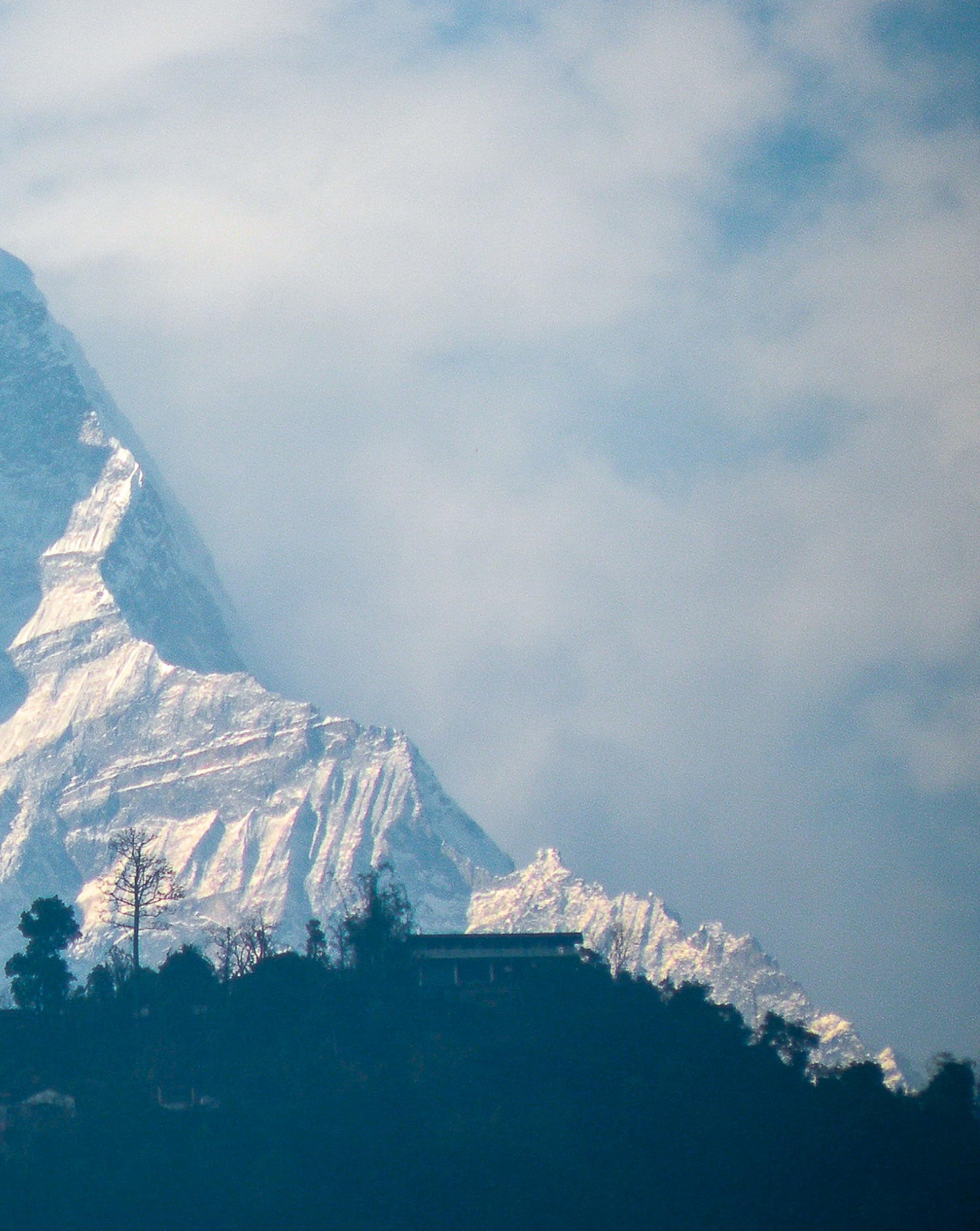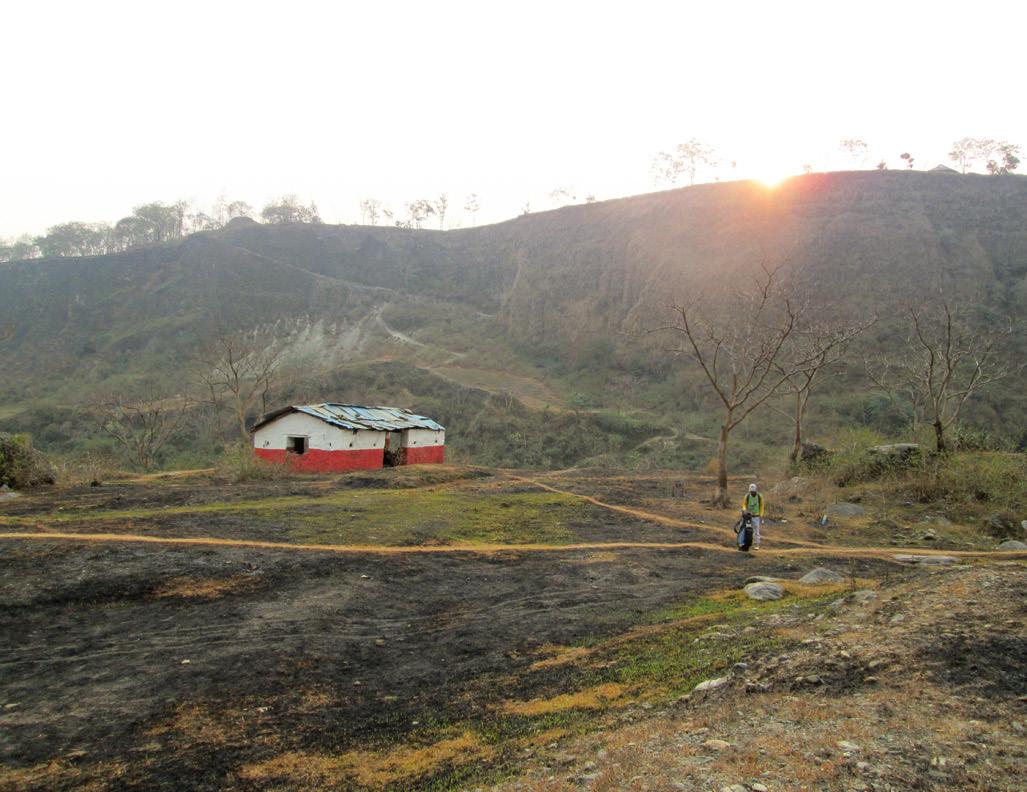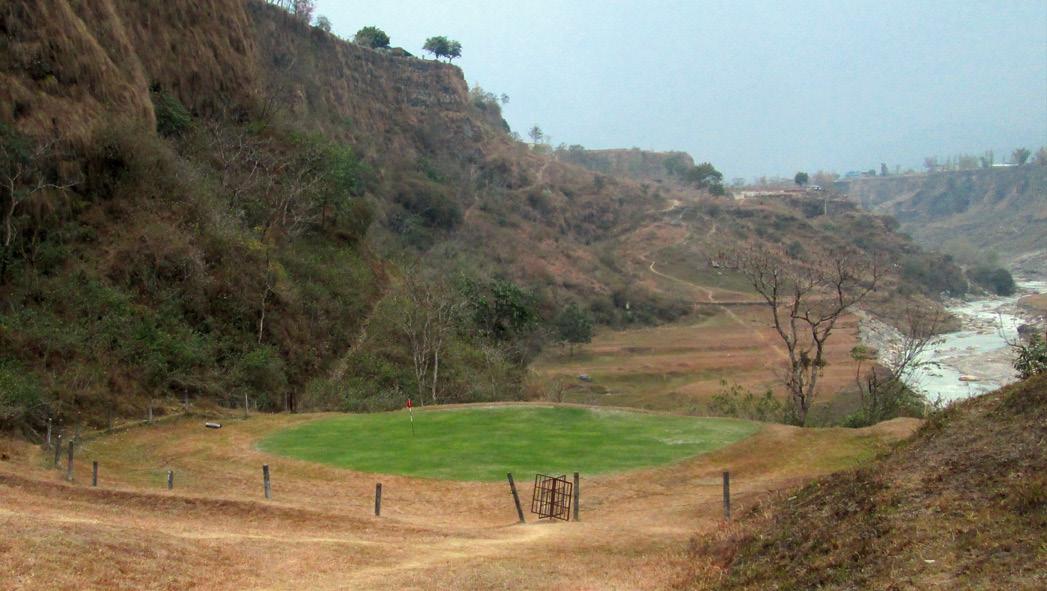
10 minute read
Hitting new Heights Matt Cooper travelled to the Himalayas to experience “The Most Amazing Golf Course on Earth
from Upswing 2021
by Upswing
Hitting new Heights
Words Matt Cooper
Advertisement
The Himalayan Golf Course is considered by many to be one of the 10 most unique golf courses in the world. The course includes some of the most visually dynamic holes known to golf.
Nepal is known across the world as a trekking destination, less so as a golfing country. When Matt Cooper ventured to the roof of the world, he didn’t encounter Tiger, but he did come close to a leopard.

There is no easy way to reach Pokhara, the second largest city in Nepal, 1,400 metres above sea level and the hub of the country’s tourism trade. The flight from the capital Kathmandu is short but fraught with nerves; the drive is long (slower than the 120 miles suggest) and arguably more fretful, requiring a stomach tough enough to deal with roads that cling to near-vertical mountainsides, pockmarked by deep, crumbling holes in the surface. Details that pass by truck drivers like the buses they overtake on blind bends.

On arrival, it is typical for visitors to take a late afternoon stroll along the water’s edge at Phewa Lake, to gaze at the peaks of the Annapurna range into which many will soon venture on trekking expeditions. The hazards may not have abated because on any spare stretch of ground, the city’s children will be eagerly conducting ad-hoc games of cricket. It’s not a question of avoiding one ball, but many of them, flying in all directions, plundered by hard-hitting batsmen who dream of smashing sixes in the Indian Premier League. It’s rather like taking a sunset ramble around the 200-yard mark on a busy driving range.
Half a mile away, along the main tourist drag, evocatively named establishments fight for custom via bold metal posters. Hotel God Pigeon is one. Hotel Snow Leopard another. “Most sublime restaurant,” reads a third, adding: “No lonely, only harmony.” I almost miss a fourth, distracted when two cows, apparently unattended, wander in front of speeding buses and motorbikes. Tourists freeze in horror at what seems like unavoidable carnage, but the traffic careers past the carefree cattle. And there, beyond them, is another rusting sign, creaking in the breeze, advertising my destination the following day – the Himalayan Golf Club. On it, a golfer is silhouetted by the sun and above him reads another somewhat audacious claim, but one I have hopes will be very much fulfilled: “The Most Amazing Golf Course on Earth.”
The journey out of town the next afternoon reiterates that avoiding potholes on Nepal’s roads is a challenge every bit as complex as negotiating safe passage around The Old Course in St Andrews without visiting a bunker. A Gurkha soldier guards the club gate and when he lifts the barrier, we’re shocked to journey through the eerie remains of an abandoned and unfinished hotel. Our questions are met with evasive answers and the driver is palpably relieved that a first sight of the course distracts us from further investigation.
By this time, I am also concerned that we have no more than three and a half hours light remaining in the day and as a consequence, as designated leader of the group, I bustle around the clubhouse. Green fees are paid, scorecards collected, hire clubs, caddies, even forecaddies assigned,
and swift introductions made. In the hubbub, I find myself accidentally in the zone and so keen to get moving that I pull the driver, tee it up and hit before I’ve even noticed that a gallery of about 40 people have joined us on the tee. The ball, which sails straight and true, is greeted by the most astonishing noise any of my blows has ever prompted – cries of congratulations, all peppered with the polite tones of Empire, and a generous round of applause. To the enormous relief of my playing partners, who admit that they’ve played one round between them in the previous two years, this gallery does not accompany us down the first, instead returning to the bar for gin and tonic.
The first hole is a simple affair and the second, another short par-4, appears much the same. My approach requires an 8-iron, which I land short but am unable to stop on the dry earth. “Over green, Sir,” says my caddie Krishna. “Only just,” I insist, “it’ll be okay.” “Maybe,” he says, looking a little more concerned than I felt warranted.


It turns out he was right. The ball may have only trickled beyond the back edge of the green, but it then descended approximately 300-foot into the scrubland that clings to the cliff faces of the vast canyon which hosts the majority of the course. This was not the first encounter with it that I had been expecting. Our forecaddie Susil, a lad of 13, pointed downwards. “I get ball,” he said. “No, don’t bother,” I started, but he was off, descending scree into thornbushes with an eagerness I found alarming.

Fifteen minutes later, he re-emerges in the middle of the third fairway with a ball in his outstretched hand. “I found it!” he cries, wearing a proud grin. There was, I am convinced, no way he could have discovered my ball, with its Women’s British Open stamp, among that vertical jungle, but I decide to humour his enthusiasm. Like Krishna, it turns out he was right – the logo was there to prove it.
There is no time to dwell, however. The
course, originally designed in the 1990s by Major Ram Garang following his retirement from the British army and expanded in 2011, demands my attention. Rugged and rigorous, it is as if two tectonic plates have cracked apart and revealed a little piece of Scotland in the gap. The greens are small, the targets smaller due to fast-running turf, the threats devilish: gnarly rough, dense jungle and, from the fifth tee onwards, we are introduced to the frothing, milky white Bijayapur River that thunders through the heart of the layout, its freezing water descending straight down from the heights of the Himalayas, quite possibly from the famed Machapuchare, the highest unclimbed peak in the country, often referred to as the ‘Holy Untouched Mountain of Nepal’.
The fifth is a par-5, which crosses the river twice, the approach shot needing to find a green that sits on
an island in the middle of the white water. The par-3 sixth then plays across the chasm to a green perched high on the canyon side. Krishna, who was a little in awe of my opening tee shot and consequently overestimated my ability, has come to terms with the underwhelming reality. Still, he remains desperate to demonstrate his own swing and I suggest he hits a tee shot here. He leaps at the chance, launching a 4-iron to the back of the green, a shy smile failing to mask his pride.
Our three balls also reach the other side and so, too, do we, but only after a fraught journey across a metal bridge that shredded what few nerves we had after thinning, slicing and ballooning our tee shots in the general direction of the green.
After completing the turn, the tenth hole returns close by the riverside and somehow the fast-flowing water seems to hasten my tee shot down the fairway. It definitely had that effect on my playing partner’s ball after he sliced it in there. Having found the middle of the fairway, I found myself a little confused by what to do next. “Where do I hit it?” I ask Krishna. “There,” he says. “But that’s a cliff,” I say. “Yes,” he says. “Hit to the top of cliff.”


I do as he asks and am amazed, following the subsequent hike to find myself left with a mere chip to the green. There is, however, a problem.
The putting surfaces, like many hill courses in Wales and Scotland, are defended by small fences, often with a turnstile for entry, against which my ball now rests. “Sir, free drop,” says Krishna. “What are these fences for?” I ask. “What are they keeping out? Sheep? I haven’t seen any sheep.” He doesn’t miss a beat. “No sheep,” he says. “Leopard.” It occurs to me that a big cat is unlikely to be inconvenienced by a handful of horizontal wires, but the thought of a large, spotted one nearby is a new golfing hazard to me and more distracting than a pot bunker, so I’m quietly pleased with myself when the pitch lands stone-dead to secure my par.
Leaving the green, one of my partners admits he is feeling a little beaten-up by the course, and two holes later, he proves it. The tee of this par-3 calls for yet another cleanly struck effort over the river to a distant green. He misses our discussion of the challenge due to a call of nature, but on his return hits a magnificent blow which sails straight and high, landing softly in the middle of the putting surface, some six feet from the flag. “Best shot of the day,” he cries, mystified by the
silence, more confused still when the caddies descended into fits of giggles. “Wrong green, Sir,” they say. Down below us, Susil is waving from the wrong green, letting us know he has found the errant shot. More laughter.

At the back of the 14th green Krishna points across the river, first to an eagle’s nest and then to a small hamlet sitting on a ledge halfway up the gorge. “I live there,” he tells me and suddenly all is clear. The golfers in Nepal are almost exclusively ex-pats or ex-Empire. The exceptions are curious locals, their interest piqued by the sight of this peculiar game played near their homes. Few would have had the view Krishna has woken up to every day of his life – the best view of the course imaginable. No wonder his interest was aroused.
This is not a course lacking for an explosive finale. The 15th is a majestic, sweeping par-4 that would grace any Scottish course. The tee shot calls for a high blow to a fairway shaped like a saddle and is set plum in front of the Himalayan backdrop. We’re in the wrong part of the country for it to be geographically correct, but I long to ask for the line and perhaps be told: “You see that peak in the distance? That’s Everest. That’s the line.” The approach descends to the green, a fast-running shot with the river in the far distance.
It’s followed by a climb out of the canyon, which redefines the notion of lung-busting, but it is worth it for the view from the 16th
tee which is perched on the edge of an escarpment and calls for a long carry over a sheer drop back where we’ve just come from. Not for nothing is the hole known as
“The Abyss”. The tee shot demands steady nerve just to be played because anyone wary of heights might struggle even to tee up the ball, never mind take a swing at it. Safe to say, we all favour the back foot with our efforts.
With the light fast fading, we opt not to play the first and second holes again (which is how to complete the 18 here). Instead, I chat with Krishna about my small rucksack, which he has been wearing all day and making regular admiring comments about. I empty the contents into a plastic bag, hand him the rucksack and a tip.
Before we leave I ask him a quick question: “What links the fifth hole at Prestwick (host of the first 12 Open Championship), one of the three loops of nine at Princes (host of the 1932 Open) and the putting green to the right of the second hole at St Andrews, the Home of Golf?” He shakes his head. “They’re all called The Himalayas,” I explain. A smile breaks across his face and then, with a cheeky glint in his eye, he adds: “But Sir, only one genuine Himalaya Golf Club.” Not for the first time today, I admit he is right.










